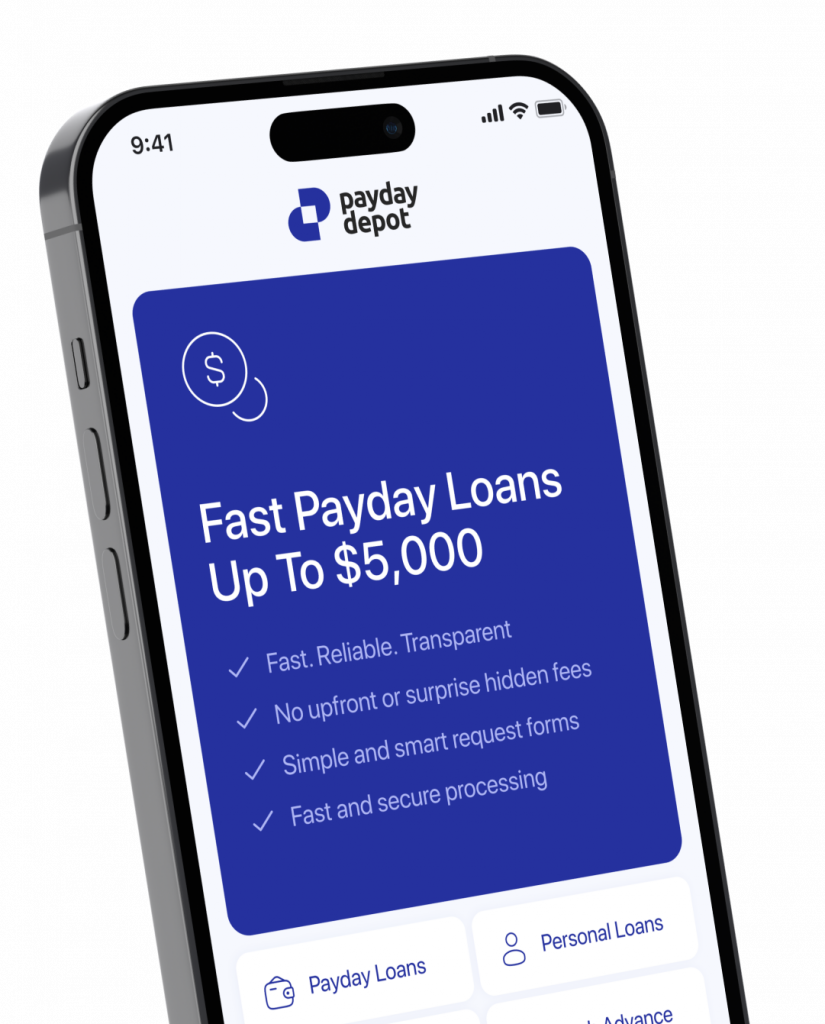Jessica Walrack, a freelance financial writer from Boise, Idaho, USA, brings over 10 years of experience. She specializes in personal and business finance topics like banking, investment, taxes, insurance, and retirement. Jessica’s work features on reputable platforms like CBS News MoneyWatch, US News, and Investopedia. Read more
Instant Cash Advance Online
Have you found yourself in a situation where you need quick access to cash? Perhaps rent is due and you’re a few hundred dollars short, or your air conditioner went out and you need to get it fixed right away.
Whatever the case may be, cash advances are short-term loans designed for emergencies. They can provide you with an instant source of cash, even if you have poor or no credit. The catch? They often come with high costs and short repayment periods.
This article takes a closer look at what cash advances are, the different types available to you, and everything you need to know about getting a cash advance.
What Is a Cash Advance?
A cash advance is a type of short-term loan that offers quick access to a relatively small amount of cash. Cash advances are often available through credit cards or payday loan providers.
While quick and convenient, cash advances come with expensive rates and fees, so are typically only recommended for use in emergencies.
How Does a Cash Advance Work?
The way a cash advance works depends on whether you get one from an online payday lender or through a credit card you already hold. We’ll explore both options below.
Instant Online Cash Advances
Instant online cash advances, also known as payday loans, offer a way to gain quick access to cash through an online payday lender.
To qualify for a payday loan, you’ll need a valid residence, proof that you’re of legal age, a verifiable stable source of income, and an active personal bank account. The good news? Poor or no credit typically won’t disqualify you.
The online application process typically requires you to provide information, including your:
- Full name;
- Birthdate — you must be 18 years of age or older to get a payday loan;
- Address;
- Income source and amount, such as a paycheck, Social Security or disability;
- Income frequency and schedule;
- Bank account details;
- Social security number;
- A valid government-issued form of ID such as a driver’s license or passport.
Upon approval, you’ll be presented with the amount you can borrow, the borrowing costs, and the repayment terms. Cash advances often come with relatively expensive fees and interest rates, so it’s important to carefully weigh the costs and benefits.
If you decide to accept an instant cash advance, the cash will be deposited into your bank account as soon as the same day.
As for repaying your cash advance, you typically need to repay a payday loan in full within one to four weeks, according to the payment schedule provided. It’s important to ensure that you can make the full repayment on time, or you may incur additional penalties and fees.
No matter how you receive your credit card cash advance, the cost and repayment terms will typically be the same. Credit card cash advances often come with a fee and an elevated annual percentage rate of interest (APR). Furthermore, interest immediately begins accruing on the outstanding balance — unlike the interest incurred on credit card purchases, which only begins accruing after the close of a billing cycle.
The cash advance amount will become part of the outstanding balance on your credit card. On the bright side, you’ll only need to make your normal minimum payments to stay current as far as your payment history goes. As a result, you can leave the cash advance balance outstanding for as long as you need. However, you will accrue interest at a high percentage rate until the cash advance is paid off, so it’s best to pay it off as soon as possible to avoid further jeopardizing your financial health.
Credit Card Cash Advances
If you have a credit card that allows you to withdraw cash advances, you can often request an advance through an ATM, by visiting a bank, or by using a check provided by your credit card issuer.
ATM Cash Advance
To request a cash advance at an ATM, you’ll need to first set up a personal identification number, or PIN. You can usually do so via an online account portal, or by calling your credit card provider.
Next, you’ll head to an ATM, insert your card, enter your PIN, then select the option for “cash advance” or “cash withdrawal.” You’ll then select “credit” on the ATM screen, and enter the amount you want to withdraw. Upon approval from your credit card provider, your cash will be disbursed.
Warning: Be sure to request an amount that is less than your cash advance limit, or the transaction will be denied. Cash advance limits are different from total credit limits, and your credit card issuer may set a daily or total cash advance limit that is less than the amount of money you need in a hurry.
Check Cash Advance
To request a cash advance via check, your credit card provider will need to provide you with a specific check for this purpose. Some card issuers automatically provide them when you open the account, while others may send you check cash advance offers in the mail or allow you to order them.
If your credit card issuer has brick-and-mortar banking locations, you may be able visit your local branch to request a cash advance check as well.
Once you have a cash advance check in hand, you’ll need to name yourself as the payee if you aren’t already designated as the recipient of the funds. After that, you can cash the check or deposit the funds into your checking account.
Bank Cash Advance
Getting a cash advance at a bank requires you to go into a local branch, speak to a teller, request a cash advance using a credit card, and enter your PIN. Again, ensure you request an amount below your cash advance limit. Upon approval, the teller will hand you the cash.
How Much Cash Can You Withdraw Using a Cash Advance?
The amount of cash you can borrow with a cash advance varies depending on the lender you choose, and the amount for which you qualify. If you’re looking for a cash advance through a credit card, credit card issuers often allow you to withdraw anywhere from $100 up to 30% of your credit limit. The higher your credit limit, the more you can usually borrow.
If you’re requesting a cash advance through an online lender, you’ll be presented with a range of loan amounts, often in the ballpark of $500 to $5,000. You’ll request the amount you need from within the range available to you when filling out your application. The lender will then look at factors such as your employment history and income to decide how much you can borrow. If you don’t qualify to borrow the amount you requested, your lender may offer you less money than you want or need.
Cash Advance Terms
Cash advance terms will vary by provider, but typically include three main components: Fees, interest rates and repayment terms. We’ll look at each of these components below.
Fees
Cash advance providers make a profit based on the fees and interest they charge you for the service. The fees can be a percentage of the loan amount, a flat amount, or a combination of the two.
If you get a cash advance through a credit card, the transaction fee is often 3% to 5% of the loan amount or a $3 to $5 fee. For example, on the Quicksilver credit card, Capital One charges 3% of the transaction amount or $3 — whichever amount is greater.
With online instant cash advances, payday lenders also often charge a fee based on the amount borrowed. According to the Consumer Financial Protection Bureau (CFPB), the typical fee range is $10 to $30 per $100 borrowed.
Interest Rates
If you get a cash advance through a credit card, you’ll be charged interest on the outstanding balance until it’s repaid in full. Further, interest on cash advances begins accruing when you withdraw the cash, and is often charged at a higher APR. For example, Capital One’s Quicksilver credit card offers purchase APRs of 19.74%, 25.74%, and 29.74%, depending on your creditworthiness. Meanwhile, the APR on cash advances is always 29.74%, no matter how creditworthy you are.
Online instant cash advances from payday lenders often have APRs listed, but they aren’t an additional amount of interest due. Instead, they’re just the cost of the loan expressed as an annual rate to make it easy to compare rates across providers. For example, an advance of $100 with a 17.50% fee rate and a 14-day loan term would have an APR of 456.25%.
Repayment
The repayment terms on your cash advance loan spell out the amount of time you have before you need to repay the cash advance.
As explained above, credit card cash advances get added to your outstanding balance, and only the monthly minimum payment is required each month to stay current.
Online instant cash advances often have repayment due dates within 30 days. If the full amount, plus fees, isn’t repaid by the due date, you could face late fees and penalties.
Note: Your state may offer you some protection from exorbitant repayment fees. Some states require payday lenders to offer extended payment terms without fees if borrowers are having trouble repaying their loans.
Cash Advance Pros and Cons
Cash advances have pros and cons that vary depending on the type of loan you choose.
Credit Card Cash Advances
These are the pros and cons of credit card cash advances:
Pros
- Low fees relative to payday loan cash advances;
- Flexible repayment terms;
- Easy to get if you have a credit card;
- Can pull cash from ATM.
Cons
- Fee and interest charges;
- Elevated APRs;
- Interest accrues from the advance date;
- Must qualify for a credit card.
Credit card cash advances can be a good option if you have a credit card on hand that allows cash advances in amounts high enough for your needs. Additionally, the transaction fees are typically on the low end, ranging from 3% to 5%. Credit cards also offer flexible repayment terms for cash advances, and can be convenient because you’re able to withdraw cash directly from most ATMs.
On the downside, credit card cash advances can end up being expensive if you don’t pay them off promptly. Interest begins accruing immediately and will continue to accrue, at an elevated APR, until the balance is paid off in full.
Furthermore, credit card cash advances aren’t the best fit for people with bad or no credit, who aren’t able to get approved for credit cards or don’t have enough available credit to cover their short-term cash needs.
Online Instant Cash Advances
Next, here’s a look at the pros and cons of online instant cash advances.
Pros
- One transparent fee;
- Higher loan amounts may be available;
- Flexible eligibility requirements;
- Can complete the process online;
Cons
- High APRs;
- Short repayment periods;
- Must be employed and have a bank account;
- Restricted in some states.
Online cash advances offer a few advantages as well. For starters, they are fast and convenient: You can apply online, get an answer in seconds, and have cash in your bank account as soon as the same day. Online cash advances are also accessible to borrowers with bad or no credit; the fee structure is easy to understand; and some payday lenders offer higher loan amounts than those available through a credit card cash advance.
On the downside, you’ll have less flexibility when it comes to repaying an online cash advance. Rather than only needing to make a minimum payment each month, you’ll be required to repay the full amount of the loan — plus fees — within a few weeks. You also must have an active bank account and a stable income source, and the fees are typically higher than those charged through credit card cash advances. Finally some states ban payday loans or online cash advances outright, so this financing source might not even be available where you live.
Credit Card Cash Advance Alternatives
What options do you have aside from credit card advances? If the cons of a cash advance sound a bit too costly, here are a few other ideas to consider.
Borrow From a Friend or Family Member
While it can be uncomfortable to borrow money from a friend or family member, sometimes it’s necessary to do so. Borrowing from your social network can help you get back on track as quickly as possible. Instead of high fees, credit checks, and legal contracts, the loan is secured by your relationship. The stakes are still high, but you may want to consider this route during a tough time if you have a loved one you trust who can advance you the funds you need. Be sure to establish clear repayment terms and meet them faithfully to avoid jeopardizing your relationship.
Credit Card Purchase
If you have a credit card and are able to use it to pay for your emergency needs, it’s better to charge the transaction to your credit card as a purchase rather than pulling out a cash advance. Credit card purchases often come with lower APRs and no additional fees, and you won’t owe interest on your purchases until the close of the billing cycle. You may also be able to find a card with a 0% APR promotional period that allows you more time — between nine to 24 months — to pay off the balance without interest.
Payroll Advance
More and more employers are offering payroll advances as part of their employee benefits packages. Third-party service providers working with your employer enable you to request payroll advances through a mobile app. As soon as you clock your hours, your pay for those worked hours becomes accessible within the third-party servicing app, often for a small flat fee. Then once you get paid a few days later, the amount you borrowed is automatically deducted from your paycheck.
If your employer doesn’t offer automated payroll advances, you may want to ask your human resources team if you can manually request a payroll advance.
Buy Now, Pay Later (BNPL) Services
Buy now, pay later (BNPL) services are also on the rise. Many BNPL providers allow you to make purchases and pay them off over time. BNPL is most prevalent with online retailers, where you will typically see the option of paying for your purchase outright or splitting up the total over several payment periods. Some BNPL providers allow you to pay over installments without charging any fees, while others charge a percentage of what you owe in exchange for the flexibility of paying what you owe over time.
Title Loan
A title loan is a loan that’s secured by using your vehicle as collateral. If you own a vehicle outright, you can take the car to a title loan lender, apply for a loan using your title as guarantee that you’ll repay what you owe, and then make the repayments to reclaim ownership. However, be sure that the loan repayments fit into your budget because if you fail to make them, the lender can take ownership of your vehicle.
Pawn Shops
Another option for getting quick cash is to grab something you have of value, and head to a local pawn shop. Pawn shops will lend you money on the spot for items of value. However, you aren’t selling the item to the pawnshop. Instead, you let the pawn shop hold your valuable item as collateral in exchange for the loan. As long as you pay back the loan as agreed, plus interest, you can get your item back. If you don’t, the pawn shop will keep the item and likely put it up for sale.
Personal Unsecured Loans
If you have fair or good credit, you may want to look into applying for a personal loan. These types of loans often offer quick funding, sometimes within the same day you apply. Personal loans often come with lower interest rates, higher loan amounts, and longer repayment periods compared to cash advances. As a result, personal loans can be a more affordable way to borrow the money you need. Many lenders accept personal loan applications in person and online.
FAQ
Does a Credit Card Cash Advance Impact My Credit Score?
Requesting a credit card cash advance can impact your credit score. While a credit card cash advance isn’t considered a new line of credit and doesn’t require a credit inquiry — as long as you already have an eligible credit card — requesting cash through your credit card can impact your score by increasing your outstanding balance.
Your credit utilization is a weighty component in credit scores, which describes the amount of credit that you’ve used relative to the total amount available to you. As your credit utilization increases, your credit score decreases. So if you pull out a cash advance and your credit card company reports it to the credit bureaus before you pay it off, you’ll likely see your score drop.
Where Are Instant Online Cash Advances/Payday Loans Illegal?
Payday loans are prohibited in a number of states including Arizona, Arkansas, the District of Columbia, Georgia, Hawaii, New Mexico, and North Carolina. Further, the majority of states have laws regulating different aspects of payday loans such as the loan amounts, loan terms, and finance charges that lenders are allowed to charge borrowers.
In Idaho, for example, payday loans are allowed in amounts up to $1,000 or 25% of the gross monthly income of the borrower, whichever is lower. But in Indiana, payday loans can’t be more than $550, repayment terms must be longer than 14 days, and finance charges are limited to no more than 15% of the loan amount.
To learn about the payday loan laws in your state, you can check the National Conference of State Legislatures’ Payday Lending State Statutes chart.
Credit card cash advances aren’t considered payday loans, so the laws above don’t apply.
Can I Get a Cash Advance Without a Bank Account?
One of the main requirements for online cash advances is that the borrower must have an open and active bank account. The cash advance funds will be directly deposited into that bank account, and repayments will often be withdrawn directly from that same account as well.
On the other hand, a bank account is not directly involved in a credit card cash advance, since cash comes out of the credit card’s available limit. That said, most credit cards require that outstanding credit card balances be paid from a checking or savings account. However, some credit cards also accept cash payments deposited at a bank branch or ATM. If that’s the case with your credit card provider, you could process a cash advance with a credit card — without using a bank account — and pay back what you owe in cash.
Should You Get an Instant Cash Advance Online?
When available, an instant online cash advance may be able to quickly get you the money you need in a pinch. On the downside, cash advances are an expensive way to borrow; repayment periods are short; and this type of loan isn’t available everywhere.
However an instant online cash advance can make sense in some scenarios. If you are $500 short on rent, a $100 cash advance fee can be a steep fee to pay. But if you’re facing a $200 late fee and possible eviction if you can’t make rent, the cash advance could be the lesser of two evils. No matter the case, it’s important to understand all of the costs, terms, and alternatives so you can make an informed decision on the best solution for your situation.



